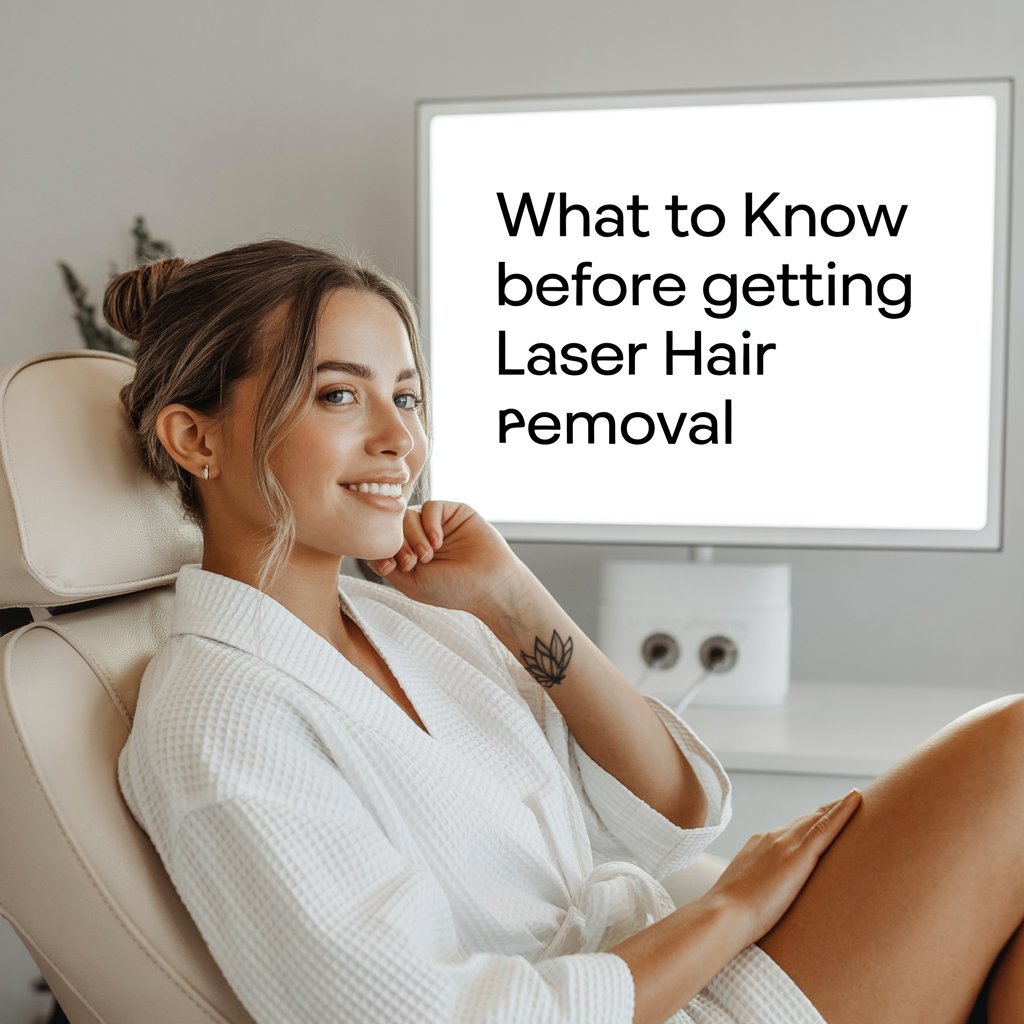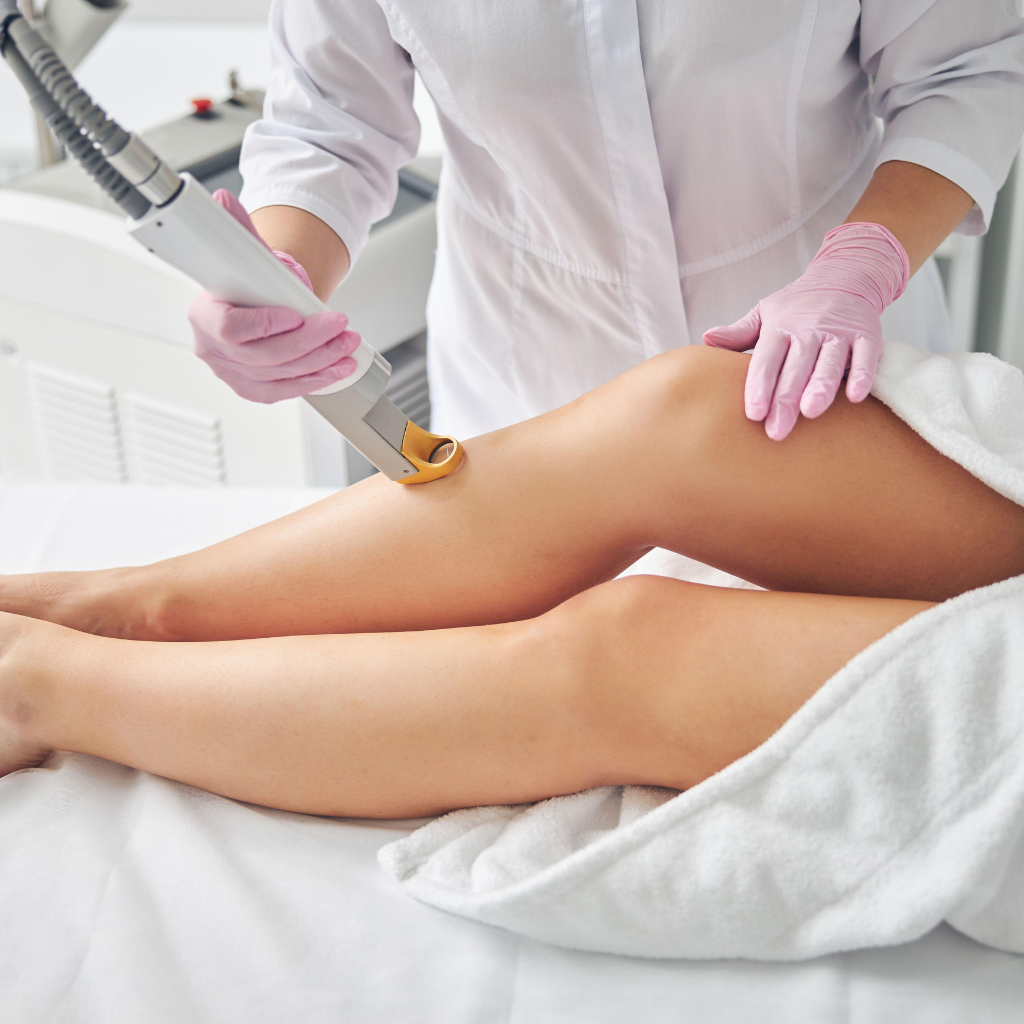What to Do Before Laser Hair Removal: How to Prepare and What to Know
- Home
- Laser Hair Removal
- what to do before getting laser hair removal

Preparing carefully for a laser hair removal appointment gives you the best possible results. It involves more than just booking a date. You must nurture healthy skin, avoid certain products, and follow guidelines that protect you during each session. This process helps reduce risks and boosts the effectiveness of each treatment.
Essential Things to Know Before Undergoing Laser Hair Removal
Fifty words matter here: understanding laser fundamentals lays the groundwork. Anyone curious about what to do before getting laser hair removal will benefit from realistic expectations. You’ll need several sessions for wider body zones, but each visit gradually reduces regrowth. Good preparation, correct timing, and professional care truly shape success.
How Does Laser Hair Removal Work? Understanding the Treatment Process
Laser hair removal treatment targets the pigment lodged inside hair follicles. Once focused light hits those follicles, they heat up and become damaged. Over time, this minimizes new growth. Different machines handle varied skin and hair types, but the common goal is preventing regrowth in the treated region. Done correctly, sessions become progressively easier.
Some folks worry about discomfort, yet most report only mild sensations, like a quick snap or gentle heat. Treatment areas can include bikini line, legs, underarms, face, or back. Completing multiple sessions helps catch hairs during active growth phases. Patience pays off, as permanent reduction typically requires several appointments.
Laser Treatment Options for Different Skin Types
Laser treatment evolved to accommodate more complex skin tones. Older styles worked best for fair skin matched with dark strands, but modern advances broaden the scope. Today, practitioners select devices designed for each patient, such as diode, Nd:YAG, or Alexandrite lasers. The right fit maximizes safety and effectiveness while reducing side effects.
A consultation helps determine whether you’re a good candidate. Providers evaluate skin sensitivity, hair color, and possible medical factors that might affect success. If you’re darker skinned or have lighter hair, specialized approaches may be required. Trust a trained technician who uses the proper laser settings for your unique attributes.
Remove Unwanted Hair and Keep Realistic Expectations
Many want to remove unwanted hair quickly, yet results develop over several weeks. Expect noticeable shedding after each session, but don’t count on total elimination overnight. Hormonal fluctuations or genetic variations can influence hair regrowth. Stay consistent with your schedule, and you’ll see clear progress. Maintaining a patient outlook is essential.
Cost varies by region and clinic, so compare options. Build a rapport with qualified staff who stand by transparent pricing and share knowledge. They’ll also advise whether hormonal imbalances might complicate results. Clear communication about goals paves an honest path toward smoother, more confident outcomes with fewer surprises along the way.

How to Properly Prepare for Laser Hair Removal
Fifty words remind you: prepare for laser hair removal by caring for your skin and planning meticulously. A few weeks out, avoid plucking or waxing. Closer to the day, keep skin hydrated yet free from harsh products. Arrive with minimal products applied. Documentation, honest medical history, and patience lead to seamless sessions.
Prepare for Laser Hair Removal: Step-by-Step
Begin avoiding strong exfoliants, retinoids, or chemical peels about two weeks before your appointment. That approach gives your skin time to stabilize. Another must: skip tanning beds and intense sun exposure leading up to the session. Excess pigment from sun can raise your risk of burns or uneven skin tone.
Many clinics offer guidelines via email or a pre-appointment call. Listen carefully. If you typically wax or tweeze, stop at least four weeks prior, because the laser needs the hair root. Shaving remains acceptable, as it doesn’t remove hair at the follicle. Take these steps and you’re off to a good start.
Avoid Laser Risks: Safe Skin Care Methods
When prepping your skin, gentle cleansers and mild moisturizers suit you best. Choose fragrance-free formulas to minimize irritations. If you frequently use strong acne treatments, check with your provider about pausing them beforehand. Certain topicals trigger skin sensitivity, so direct sunlight can harm laser-treated spots more easily.
Try a test patch on a small area if you’re uncertain about product compatibility. Watch for unusual redness, swelling, or heat. Proper moisture balance improves healing time afterwards, so don’t ignore dryness. Balanced skin recovers faster after each appointment, helping you witness quicker shedding and minimized downtime.
Essential Paperwork and Appointments
During your initial consultation, share details about medications and health conditions. Examples include birth control pills, photosensitive prescriptions, or any recent antibiotic use that might interact with the laser process. Complete honesty ensures a safe approach. Bring your ID, payment method, and updated medical info on the day of.
If a patch test is recommended, allow time for that. It helps reveal potential reactions and lets your provider confirm the correct device settings. Keep track of appointment schedules. Use phone reminders or a planner to avoid missing sessions. Consistency is key, since sporadic visits can hamper full, consistent progress.
Why Shaving is Essential Before Your Laser Hair Removal Treatment
Fifty words on shaving: do you need to shave before laser hair removal? Absolutely. Visible hair draws the laser’s energy before it penetrates deeper. By shaving the area neatly, you spare your skin potential burns. A short, even trim makes every pulse more precise. So don’t skip this critical step.
Shave Before Laser Hair Removal: Best Practices
Many ask, “Why do you have to shave before laser hair removal?” Because the device aims beneath the surface, not on top. If hair remains long, the laser can burn it and hurt the skin. That’s why clinics typically request shaving the area within 24 hours of treatment.
To avoid extra discomfort, shave calmly with a clean, sharp razor and use soothing shaving cream. Try not to drag the blade too forcefully. Afterward, apply a gentle moisturizer on the shaved zone. This helps calm any redness well before your scheduled service. Proper technique leads to a safer session.
Do You Need to Shave the Area Sooner?
Some wonder, “Can I shave an hour before laser hair removal?” or “Do I need to shave before laser hair removal the prior night?” Experts generally suggest shaving the evening before, not minutes before. Freshly shaved skin might be extra sensitive if done too close to the procedure. You want mild calmness by appointment time.
A final once-over the day before helps catch stray patches. Overgrown hair might be trimmed by staff, but that adds time and possible fees. If you’re uncertain about technique, don’t hesitate to ask your technician. Each clinic’s preference might vary slightly, but the main logic remains consistent.

What Happens If You Don’t Shave the Area?
Failing to shave can lead to scorching hairs on the surface, which smells unpleasant and can irritate skin further. In many instances, staff might reschedule you if hair length isn’t appropriate. That’s annoying and wastes your time. Always confirm timelines with the clinic’s guidelines. Preparation spares discomfort, hassle, and mix-ups.
When neglected, you also sacrifice optimal results, since the laser’s energy dissipates on surface strands. This reduces the beam strength where it counts—deep in the follicle. Hence, the simple act of shaving shapes a better, more targeted experience, building momentum session by session toward long-term reduction.
Important Do’s and Don’ts to Make Your Laser Hair Removal Work Effectively
Fifty words to guide you: what should you not do before laser hair removal? Avoid tanning, aggressive skin treatments, or harsh exfoliation. Use sunscreen faithfully. Refrain from plucking or waxing since you need intact follicles for the laser. By respecting these do’s and don’ts, you reinforce a smoother journey overall.
Remove Unwanted Hair with Laser: Common Mistakes
People rush into sessions without letting sunburns heal or disclosing new medications, placing them at risk of burns or complications. Others skip protective eyewear or forget to mention fragrance allergies, which can trigger rashes. Over-exfoliating not only thins skin but also raises irritability, jeopardizing the procedure’s outcome. Laser therapy demands honesty and caution.
If any test area feels unusually raw, alert staff. Consistent missteps often stall your progress, forcing additional sessions. For best results, trust well-reviewed clinics, follow medical advice, and adhere to aftercare directions precisely. Hurrying shortcuts might sabotage your long-term comfort and final success.
Manage Sun Exposure for Effective Laser Results
Sunlight complicates laser applications, so you must avoid laser sessions if you’re newly tanned. Fresh tans or sunburns heighten skin sensitivity, risking blistering or pigmentation changes. After your appointment, continue wearing a broad-spectrum sunscreen daily. Even minimal day-to-day exposure builds up if unprotected.
Remember to reapply sunscreen at intervals, especially if swimming or sweating. Clothing also acts as a shield: hats, long sleeves, or UV-protective layers help preserve your laser gains. Treat your skin gently while it heals, since dryness or peeling prolong recovery time. Ultimately, conscientious sun habits protect your investment.
Maintaining Progress: Laser Therapy Aftercare
After each session, mild redness or swelling may appear briefly, but typically fades. You can soothe the spot with cool compresses or gentle aloe-based lotions. Refrain from hot showers or steamy baths right away; choose lukewarm water instead. Avoid heavy workouts that encourage excessive sweating in newly treated zones.
Pat skin dry with a soft towel, don’t scrub. Over the coming weeks, treated hairs might shed naturally, creating patchy regrowth intervals. Resist waxing between appointments—only shave if needed. Properly paced appointments keep follicles under control as you progress. Observing these basic practices rewards you with lasting smoothness.
Conclusion
Fifty words summarize it: good prep for laser treatment tackles everything from shaving responsibly to limiting sun. By respecting your provider’s instructions, tracking your sessions, and caring for your skin before and after each procedure, you set yourself up for success. Book a consultation now, stay consistent, and watch your unwanted hair fade.

Dr. Sheena Majella is a certified dermatologist and the leading skin specialist at Tune Aesthetics. With a deep passion for skin health and beauty, she combines medical expertise with advanced aesthetic treatments to help clients look and feel their best.





